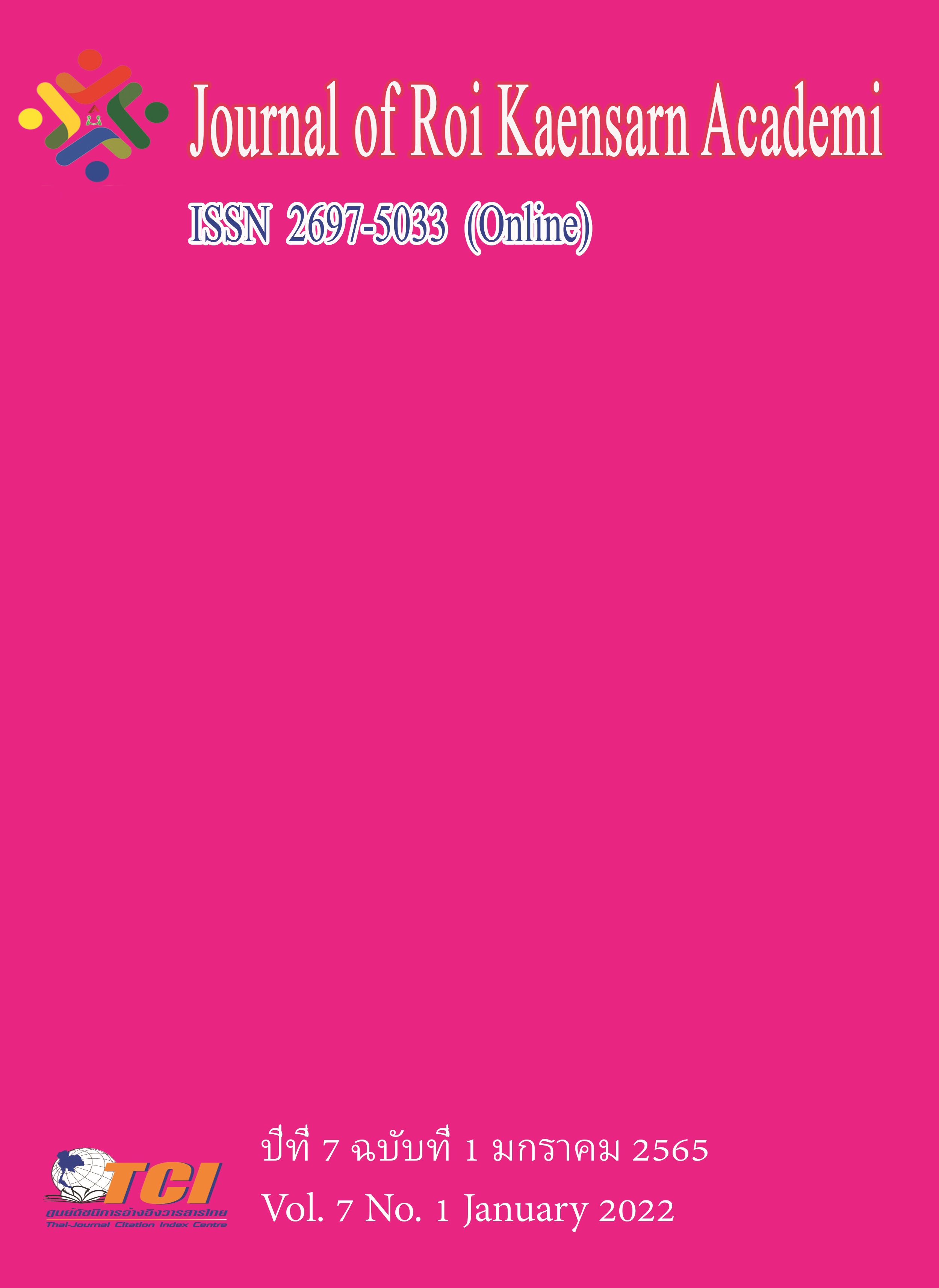การศึกษาออนไลน์และการศึกษาแบบผสมผสาน
Main Article Content
บทคัดย่อ
ในปัจจุบันโลกได้พัฒนาสู่ยุคดิจิทัลและโลกไร้พรมแดน สำหรับประเทศไทยได้กำหนดและกำลังขับคลื่อนประเทศสู่ประเทศไทย 4.0 และยุทธศาสตร์ชาติ 20 ปี (2561-2580) ซึ่งมีเป้าหมายนำประเทศสู่ประเทศที่มีเทคโนโลยีสูง อย่างไรก็ตาม ต่อมาได้มีสถานการณ์วิกฤตของการแพร่ระบาดของโควิต-19 ทำให้เกิดแนวคิดและการปฏิบัติแบบชีวิตวิถีใหม่(New Normal)ซึ่งเป็นตัวเร่งให้ทุกภาคส่วนต้องพัฒนาการทำงานโดยใช้เทคโนโลยีมากขึ้น เช่น การต้องทำงานที่บ้าน(Work From Home) และการเรียนแบบออนไลน์(Online Learning) มีการนำโปรแกรมการจัดการการเรียนการสอน Learning Management Systems (LMS) มาใช้ในการเรียนการสอนหลายชนิด เช่น Moodle, Google Classroom, Microsoft Team และอื่นๆ ซึ่งเมื่อเทคโนโลยีเจริญขึ้นจะมีการเรียนการสอนแบบการศึกษาออนไลน์มากขึ้น แต่อย่างไรก็ตามในการเรียนการสอนบางวิชาหรือในหลายสถานที่ก็ยังมีความจำเป็นที่ใช้การเรียนการสอนแบบชั้นเรียน (Face to Face) อยู่ต่อไป ซึ่งในบางสถานศึกษาอาจใช้การเรียนการสอนแบบผสมกันทั้ง 2 แบบที่เรียกว่าการศึกษาแบบผสมผสาน(Blended Learning)
ผู้บริหารสถานศึกษา ผู้บริหารการศึกษา และ ผู้สอน จึงควรศึกษาการศึกษารูปแบบต่างๆเหล่านี้เพื่อนำมาประยุกต์ใช้ให้เหมาะสมกับการเรียนการสอนที่เกี่ยวข้องต่อไป
Article Details
เอกสารอ้างอิง
Bramble, W.J. and Panda, S. (2008). Economics of distance and online learning: theory, practice, and research. RoutledgeFalmer, Taylor and Francis Group, London and New York.
Klysank, J. (2012). E-earning Courseware. From Concept to Implementation. Chula Press
Klaisank, J.(2012). E-Learning Courseware: From Concepts to Practices for E-Learning Instructions in Schools. Chulalongkhon University Publishing.
Kristine, P. (2007). 'm - Learning: Positioning educators for a mobile, connected future'. International Review of Research in Open and Distance Learning, Vol. 8, No. 2, 2007 Retrieved on 18 July 2021. Online. Retrieved on August 31, 2021. From: http://www. irrodl.org/
Pattamathamakul, J.(2012). Getting to know Flipped Classroom. KMUTT C4ED. Online. Retrieved on August 31, 2021 http://www.c4ed.kmutt.ac.th/?q=flippedclassroom
Promta, V. (2013). The Effects of Blended Learning Lessons Using Collaborative Learning for English Class of Grade VII Students with Different Group Structures to Enhance Learning Achievements. Master Thesis, Department of Educational Technology, Curriculum, and Instructions, Chulalongkorn University.
Ratanatherakul, A. (2010). Setting Up for E-Learning and Moodle System. Se-Education Publishing.
Nilrat Na Athaya, A (2014). The study of Human Factors effecting in Information System Acceptance of the Supreme Command Headquarter Officers. National Research Council of Thailand. Online. Retrieved on August 31, 2021. From: https://doi.nrct. go.th//ListDoi/listDetail?Resolve_DOI=10.14457/TU.the.2007.317
Sharpe, R., Benfield, G., Roberts, G., and Richard, F. (2006). The undergraduate experience of blended e-learning: a review of UK literature and practice. Online. Retrieved on August 31, 2021. From: http://www.heacademy.ac.uk/resources/detail/teachingand research/Undergraduate_Experience
Varajut, P. (2007). Effects of blended learning and web-facilitated learning upon achievement of Chulalongkorn University undergraduate students with different types of personality. Master Thesis, Department of Educational Technology, Curriculum, and Instructions, Chulalongkorn University..

